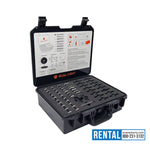You have no items in your shopping cart.

In case someone is wondering as to why some one should implement or rather opt for SMPTE time code for their shows, well the answer has been finally revealed. Back in the days when the television broadcasting industry went through a stage of transformation from video and live concert to pre-recorded video outcome, an initiative was required by them synchronize this brand new channel. Any video material or element was actually put to synchronization through sprocket holes. However, almost in an unfortunate state, any such video element possessed neither of these characteristics. An urgent need rose for an immediate solution.
And so an immediate solution was found with the introduction of the SMPTE time code. The acronym SMPTE stands for Society of Motion Picture and Television Engineers. The European Broadcast Union or simply, the EBU made it an official statement to call it as SMPTE time code. SMPTE time code set or rather defined the standards for the process of synchronization. Without any doubt, SMPTE time code serves almost a hundred of significant purposes in almost every segment of audio production. Whether its advertising, recording or industrial productions – each of these departments tend to massive utilize the SMPTE time code.
In order to serve the purpose of interlocking two different instruments so that an individual can play any audio material in perfect synchronization, the true possible outcome would be to use SMPTE time code and a separate Time Line synchronization method. The later system helps to generate a time code that is later taped on an audio recorder. After that, the SMPTE time code is used to make a possible reference segment or point. In other words, the SMPTE time code as a medium of interlink between the two different instruments for the synchronization process, thus completing the whole initiative.
While on playback, a SMPTE time code reader helps in reading the time code from an audio recorder. Then, the SMPTE time code passes the timing data to a synchronizer, which is already in connection to a different audio recorder. Referring to the incoming time code, the synchronizer that was previously connected to a different audio recorder maintains the play back velocity of the initial recorder or the slave recorder; as a result, this recorder always keeps in touch with the master or later audio recorder. In case of locking audio material to a motion picture, SMPTE is equally significant.
For locking a MIDI sequencer to a multi-track tape or, say a picture, SMPTE serves an unquestionable purpose; the Time Line Micro Lynx helps in translating the time code to MIDI recognized data. This MIDI recognized data is essential for the sequencer to lock to a tape. Moreover, the SMPTE time code is helpful for controlling almost any thing that includes micro-processor intelligence. For example, mixing console automation will make progress through the SMPTE time code. As a result, it makes it possible to lock it to a tape and other different SMPTE time code instruments for complete system automation.





